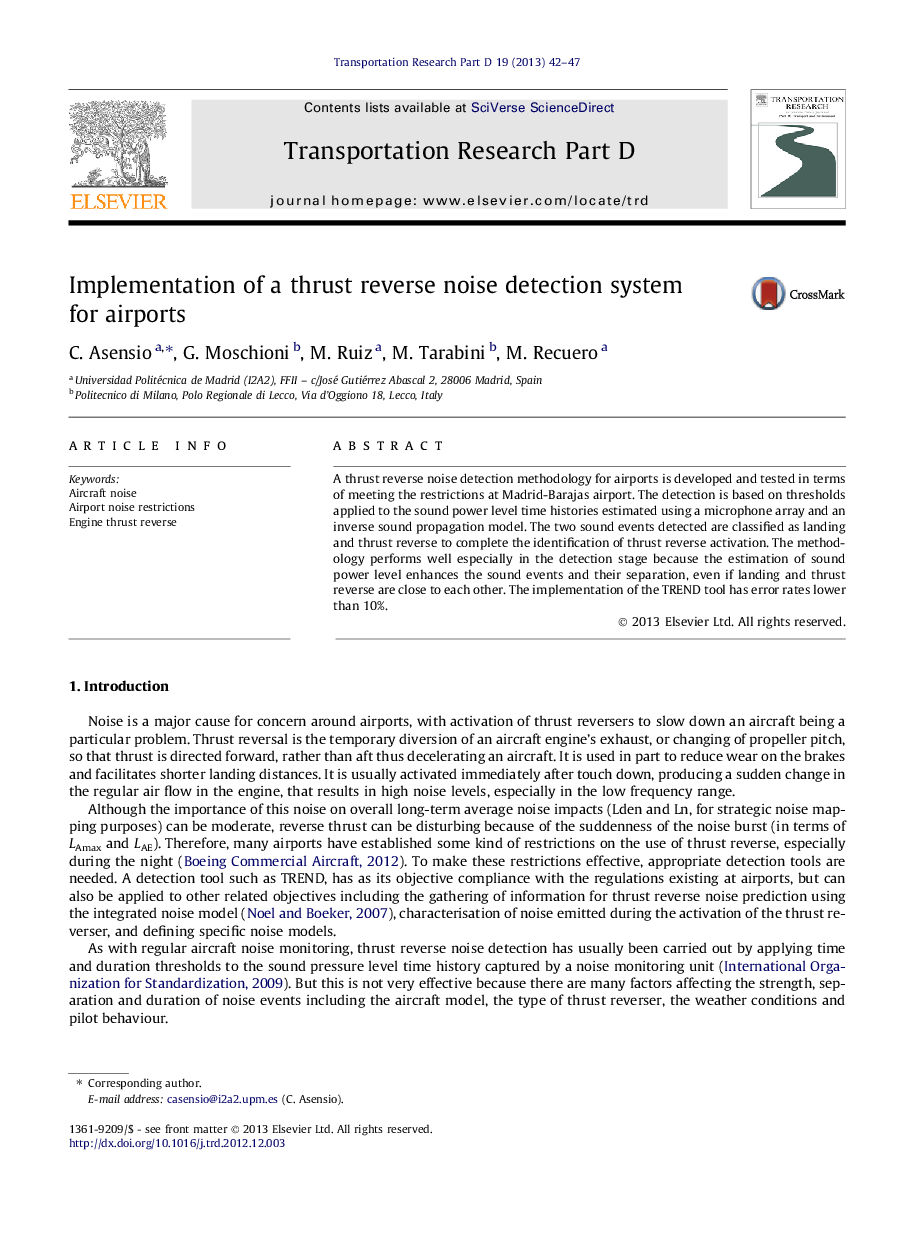| Article ID | Journal | Published Year | Pages | File Type |
|---|---|---|---|---|
| 1065926 | Transportation Research Part D: Transport and Environment | 2013 | 6 Pages |
A thrust reverse noise detection methodology for airports is developed and tested in terms of meeting the restrictions at Madrid-Barajas airport. The detection is based on thresholds applied to the sound power level time histories estimated using a microphone array and an inverse sound propagation model. The two sound events detected are classified as landing and thrust reverse to complete the identification of thrust reverse activation. The methodology performs well especially in the detection stage because the estimation of sound power level enhances the sound events and their separation, even if landing and thrust reverse are close to each other. The implementation of the TREND tool has error rates lower than 10%.
► Methodology for the identification of thrust reverse noise events in airports. ► Detection of two consecutive sound events, to be classified as landing and thrust reverse. ► Sound events detection using thresholds on sound power level time history, Lw(t). ► Use of a microphone array and a inverse sound propagation model for Lw(t) estimations. ► Classification through pattern recognition techniques.
